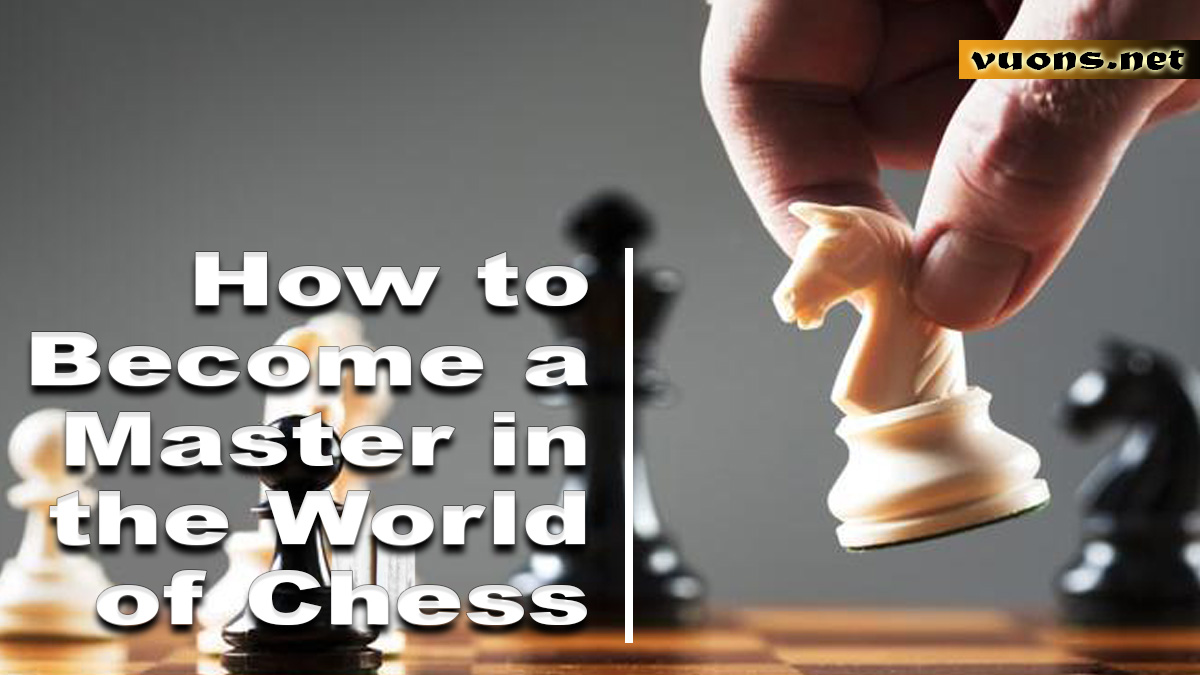Great Strategy in Chess: Tips for Beginner Players
Understanding Chess Basics: An Important First Step
Chess is a Game of strategy that has fascinated millions of people around the world for centuries. Chess may seem complicated and confusing to many beginners, but once you understand the basics, anyone can enjoy and master the game. This article will help you understand the basics of chess, which is an important first step to becoming a better player.
A Brief History of Chess
Chess has a long history, starting with the game of Chaturanga in India more than 1000 years ago. From there, chess developed, spreading to Persia, Arabia, and finally Europe, where it developed into the game we know today. Understanding this brief history will help you understand the depth and cultural legacy of chess.
Chess and Pawn Board Arrangement
The game of chess is played on an 8×8 square board with 64 alternating black and white squares. Each player starts with 16 pieces: a king, a minister (queen), 2 rooks, 2 horses, 2 elephants, and 8 pawns. Arrange the board so that the bottom right square is white.
The pieces are arranged as follows.
1st row (white players from left to right): Rook, horse, elephant, minister (queen), king, elephant, horse, rook
2nd row: 8 pieces
The way the pieces move
Based on the type of piece, each piece has its own method of movement:
King: Move one square in any direction.
Minister (Queen): Move horizontally, vertically, and diagonally as much as possible. Tower
: Move as far as possible horizontally or vertically.
Elephant: Move as diagonally as possible.
Horse: Moves in an “L” shape (two squares in one direction, one square in the other).
Pawn: Moves one square forward, but attacks diagonally. On the first move, the pawn can move forward two squares.
GOAL OF THE GAME
The main goal of the game of chess is to checkmate the opponent’s king, that is, to expose the opponent’s king to an immediate and unavoidable threat. Under certain circumstances, the game can end in a draw, for example in a putting situation (a player whose turn comes and whose king is not checked has no legal recourse).
First Important Step: Opening
The opening is the first phase of a chess game in which players deploy their pieces from the back row and fight for control in the center of the board. The basic principles of opening are:
Center Control: Controlling the center squares (d4, d5, e4, e5) increases the freedom of pieces and pieces.
Part Development: Move important parts (horse and elephant) to active positions as soon as possible.
King Safety: Keeps the king safe through castling. This also helps connect the forts.
Effective Opening: Starting the Game Strong
In chess, a strong opening often determines the course of the game. A good opening not only helps you deploy your pieces effectively, but also keeps your opponents on the defensive early on. In this article, we will discuss effective openings, strategies and tips to start the game strong and build a solid foundation for victory.
Meaning of Opening in Chess
The opening is the first stage in a chess game which consists of 10 to 15 opening moves. The main goals of this phase are to develop pieces, control the center of the board, and defend the king. These steps determine the structure of the game and prepare you for a solid position in the mid and late game.
Basic Principles of Opening
Board Control Center
The center square (d4, d5, e4, e5) is an important area in the game of chess. By controlling the center, you have more room to manipulate your pieces and influence the entire board.
valid moves: 1.e4 or 1.d4 are the most common and powerful starting moves to control the center of the board.
Piece Development
Focus on developing the main characters (horse and elephant) into active positions. Do not move the same part repeatedly within the opening.
Development example: Move the horse after 1.e4 or 1.d4 to c3 and f3 to increase central control.
King’s Security
Early castling helps secure the king, allowing the rooks to connect and communicate.
Quick Castling: Once the horses and elephants grow up, castling is done to keep the king safe.
Coordination and Balance
Make sure the parts fit together and do not interfere with each other. The balance of the pawn position is very important to launch an attack or defend effectively.
Popular and Effective Opening
Spanish Opening (Ruy López)
Moves: 1.e4 e5 2.Nf3 Nc6 3.Bb5
This opening focuses on central control and puts pressure on the dark horse c6. Rui Lopez is one of the most respected and widely used openers by grandmasters.
Sicilian Defense
Move: 1.e4 c5
This defense leads to asymmetrical and dynamic play. At the expense of the first center, Black looks for a strong counterattack opportunity.
Italian Overture (Giuoco Piano)
Steps: 1.e4 e5 2.Nf3 Nc6 3.Bc4
Emphasizes fast control in the center and rapid development. This opening often leads to open play and lots of tactics.
Caro-Kann Defense
Step: 1.e4 c6
This is a great option for black players looking for a strong defensive structure and flexibility in midfield.
Tips for Successful Opening
Learn Opening Variations : Get to know the different variations and your opponent’s reactions. Understanding your next steps will help you make better decisions.
Avoid unnecessary piece movements: Focus on developing important pieces and avoid repeating initial piece movements.
Adapt to opponents: Every opponent has a different playing style. Adapting your strategy to your opponent’s reactions is key to exploiting their weaknesses.
Basic Tactics and Tricks: How to Master the Middle Game
Chess is a complex game of strategy, and mastering the middle game is the key to winning many games. After the opening period, the match enters the middle stage, and basic tactics and tips become very important. In this article, we will discuss some basic tactics and tricks that will help you master the middle game and improve your chess skills.
The Importance of the Middle Game in Chess
The middle game is the phase where most of the pieces are developed and players start to figure out how to attack, defend, and control the board. In this phase, it is important to understand basic tactics to exploit your opponent’s mistakes and build a strong position.
Basic Midgame Tactics
Gavel
Definition: An attack in which one piece threatens two or more opponent pieces at the same time.
Example: A horse on d5 threatens the king on e7 and the rook on f6. This fork allows the opponent to move one of the threatened pieces (usually the king) and capture another piece.
Pin (Lock)
Definition: An attack in which an opponent’s piece cannot be moved without exposing a more valuable piece behind the opponent’s piece.
Example: The elephant on b5 blocks the horse on c6, but the opposing king is on e8. The horse could not move because the king was guarding it.
Pinch
Definition: Similar to a pin, but in this case the higher value piece is in front of the lower value piece.
Example: The queen is on pin h5, the rook is on h8, behind it is the king on g8. If the king moves, you can take the rook.
Spotted Attack (Open Attack)
Definition: An attack that occurs when a figure moves and opens the way for another figure’s attack.
Example: The rook on d1 moves to d4, opening the way for the elephant on c1 to attack the king on h6.
Basic Tricks for Mastering Game Center
Control Center
Always control the center squares (d4, d5, e4, e5), because controlling the center gives you flexibility and range of pawn manipulation.
Develop all characters
Don’t make your character passive. Make sure all characters play an active role in the game, especially horses and elephants.
Securing the King
After the opening stage, check the king’s position again. If you haven’t already, you should probably do so and make sure your king is safe.
Attack with a plan
Don’t attack blindly. Create a coordinated attack plan and ensure all parts contribute to the attack.
Predict your opponent’s movements
Always think about your opponent’s next move. Anticipate each opponent’s attack or defense and prepare a response.
Midgame Example
Let’s look at a simple midgame example using basic tactics:
e4 e5
Nf3 Nc6
Bb5 a6
Ba4 Nf6
O-O Be7
Re1 b5
Bb3 d6
c3 O-O 4 444 Nb8 4 444 White has several midfield options at this point. White can start on d4 to control the center, or use horse control on g5 to launch an attack on the king’s flank. White’s pieces are well coordinated, and White’s king is safe after building his castle. The middle game is the time to start exploiting positions created in the early stages.
End Game Strategy: Finish the Battle Victoriously
Chess is an art that requires strategy and tactics in every step. One of the most important phases, but often overlooked by many players, is the end of the game. Understanding endgame strategy is the key to ending the battle with a win. This article explains various endgame strategies that will help you exploit positional and material advantages to achieve your ultimate goal: checkmate.
The importance of endgames in chess
Endgame is the phase when most of the pieces are removed from the board and the king becomes the most active piece. Being able to play strong late in the game can be the difference between a good player and a great player. Mastering endgame techniques can help you turn tips into wins and get you through tough situations.
Basic Endgame Strategy
Activating the King
At the end of the game, the King becomes a very powerful figure. The key to success in the late game is to activate the king and use it to support pawns or disrupt the opponent’s pawns.
Example: In many late positions, an active king can help push a pawn forward or limit the movement of the opponent’s king.
Pawn Promotion
One of the main goals of the end game is to raise a pawn to its final rank (usually Queen). Understanding basic attacking techniques and knowing when to press a pawn is very important.
Important Move: Use the king and other pieces to support the advancing pawn and prevent the opponent from getting in the way.
Profitable Exchange
Exchanging pieces wisely to gain an advantageous final position can be an important strategy. Winning exchanges usually involve eliminating the opponent’s strong pieces and retaining the more active pieces.
Considerations: Evaluate the value of each exchange and make sure it is close to a winning position.
Control and use open columns and rows
In many games, towers become stronger as rows open. Controlling a row or row of open towers gives you a strategic advantage. Strategy
: Place towers in rows or open rows to stop your opponent’s movement and support your attack.
Special End Game Techniques
Checkmate with the King and Queen
The easiest and most common way to checkmate an opponent at the end of the game is with the King and Queen. The basic strategy is to limit the movement of the opponent’s king to the edge of the board and then checkmate. Movement
: Support the queen with the king and slowly checkmate the opponent’s king by pushing it to the corner or edge of the board.
Checkmate the King and Rook
Checkmate the King and Rook is a little more complicated, but can be done with the right technique. You should direct your opponent’s king to the corner or edge of the board and use your own king to support your rook.
Procedure: Use a rook to limit the movement of your opponent’s king, forcing him into a checkmate position with your king.
Philidor and Lucena theory
Philidor and Lucena theory are two well-known final positions in chess that often occur in games using rooks and pawns.
Philidor Kick: A defensive technique that shows how to defend when the opponent has legs and fortifications.
Lucena Phase: A game winning technique when you have a rook and a pawn against your opponent’s rook. This technique involves building a “bridge” for the farmer to climb over.
History of Indonesian players in world chess

Indonesia has a rich chess history and several chess players have achieved international success. Utut Adyanto was one of the first Grandmasters (GM) in Indonesia to achieve the highest ELO rating above 2600 and became a Super GM. Susanto Megalant is the youngest GM in Indonesia to win this title at the age of 17. Little chess player Samantha Ediso made history by winning the Women’s U-10 Standard Chess World Championship. Apart from that, Indonesia has seven chess players with GM titles which shows the country’s prowess in the international chess arena (Chess.com).



